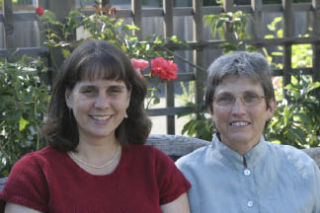The proverbial American Dream is grand. Literally.
And that, note sustainable design specialists Kathleen O’Brien and Kathleen Smith, has created a few issues.
Upper-middle-class mythology and reality, for instance, have come to value clear-cut swaths full of McMansions that take up far more space than a family of four could ever need; endless suburbs flanked by strip malls; and the need to drive everywhere.
Is the alternative, “going green” with your home, an attainable goal? They think so.
“Sustainability is here to stay. It’s hit the mainstream in a way that’s real,” Smith said.
To demonstrate the point, the pair recently co-authored “The Northwest Green Home Primer: Hundreds of ideas for building, remodeling, and buying green.” They’ll discuss the book tomorrow evening at Eagle Harbor Book Co.
As are all the best how-to books, “The Northwest Green Home Primer” is fun to flip through, with photos and illustrations on nearly every page, both to instruct and to spark readers’ thinking.
Inspiration is a big part of the authors’ intention, as readers scan for tidbits large and small: Are they really going to put solar panels on the roof of that little Victorian? We could reduce our energy bill just by cleaning the dryer’s lint trap?
The ideas are, in a word, cool.
“Wherever you are, and whatever your living situation is, you can do something,” Smith said. “That was a real driving force for how the book took shape.”
Understanding a bit about how-to reader psychology, O’Brien and Smith solicited green home case studies written in the homeowners’ own words. Being able to envision the application of so many of the principles they describe acts as a motivator so that by the end, the reader feels empowered at the very least to inspect their insulation or install a rain barrel.
And to add to the authors’ “practice what we write” cred, two of the case studies involve their own homes on Bainbridge.
O’Brien and her husband, John Cunningham, built a 1,650 square-foot home on a wetland buffer, planning from the get-go to build “lightly” and design with efficiency and function in mind.
Inside the house they used built-ins, light-colored surfaces and lifted ceilings to create a sense of space within the small footprint.
Their green materials included insulation that was 30 percent glass; fiber-cement siding; bamboo and biocomposite flooring; and solvent-free paint among other features.
Smith and her husband, Chris Gutsche – he, too, is an architect – moved to Bainbridge in 2004 specifically to live in the Winslow co-housing community. As Smith describes in her case study, “We were making a lifestyle choice and not a house choice per se.”
Cohousing communities are typically built so that residents can maximize both social interaction and privacy, as they wish. They consist of a group of smallish houses in close proximity, some attached, some free-standing, with a central courtyard and common area for socializing, group meals and activities.
Residents share responsibility for their common property, which in theory and, as Smith found, in practice, takes the idea of “community” beyond a mere buzzword.
Although Smith and Gutsche’s new house was situated in exactly the community environment they wanted, the place itself needed work. So they put their design skills to use and undertook a budget-oriented remodel that, like O’Brien’s project, made use of sustainable and in this case reclaimed materials; efficient design elements such as a built-in window seat; and available light.
On the topic of cost, the authors harbor no illusions that undertaking a green building or remodeling project is a cheap proposition at the outset. But then, no building or remodeling project is, and they believe that the payoff for residents’ health and well-being, not to mention the planet, is worth it.
The book does, however, describe ways to help keep costs reasonable, and increase future savings. For instance, the authors recommend that anyone undertaking a green project perform a simple assessment at the outset: Where does the light fall? Situating a house’s long facade so that it faces south can make a huge difference both in the lightness of the house’s interior and its energy efficiency, with no additional cost to the project.
Similarly, Smith adds, there are different choices a homeowner can make to achieve the same green goals. If conserving water for landscaping is important, owners could install a rainwater catchment system at significant cost. Or instead, they could design the landscape using native, drought-resistant plants.
“The sooner you think about green, the less it’s going to cost,” Smith said.
O’Brien echoes this point, suggesting that no matter what the scope of the project, the first step homeowners or renters – yes, renters can make a difference – must take is to sit down and assess their needs, their goals, and the way they fundamentally want to live.
That, as much as instruction, forms the basis of “The Northwest Green Home Primer.”
“The book is full of questions,” O’Brien said. “It’s got a lot of answers, but it’s mostly questions. People need to ask themselves questions.”



